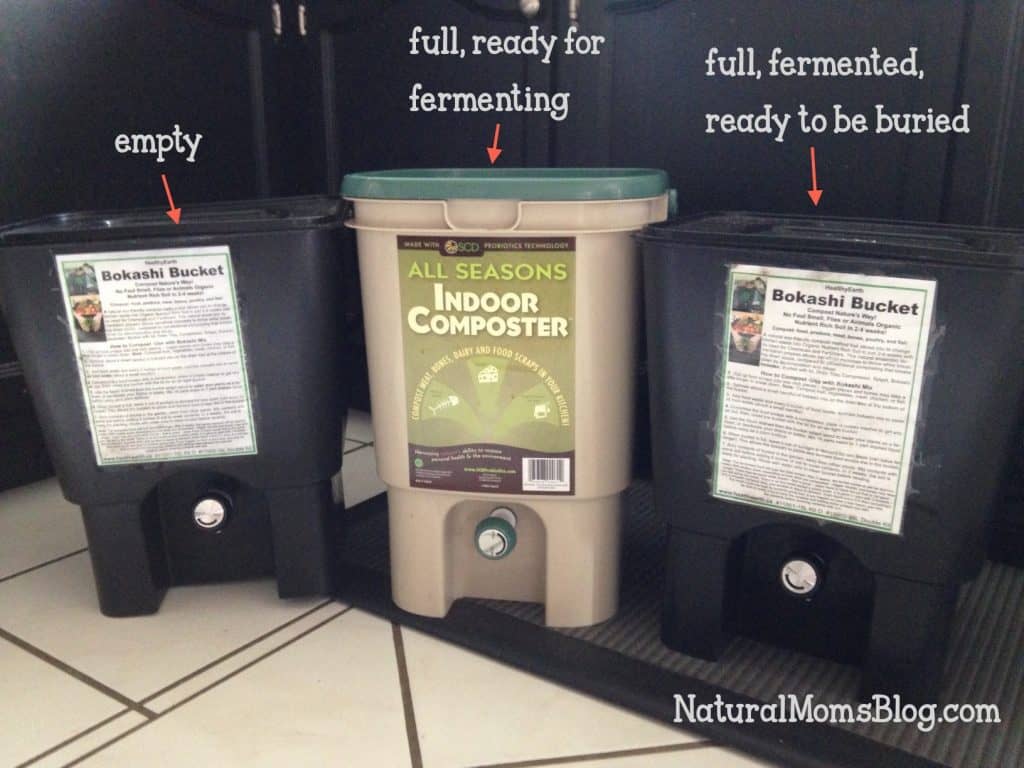- in Green Home by Alexis Rodrigo
Bokashi Composting: How to Make Your Own Composting Buckets
One of the things that discouraged me about Bokashi composting initially was having to buy a “complete system” made up of at least one indoor composting bucket (but ideally two, really) and the Bokashi bran.
I couldn’t bring myself to spend over a hundred dollars just so I could make compost. I found inexpensive Bokashi buckets, but ended up springing for a third. All in all, these 3 buckets (and the Bokashi bran that came with them) add up to, yes, over a hundred dollars.

Well, I wish I knew then what I know now: you can make your own Bokashi buckets and Bokashi bran.
In this post, I’m going to show you three different ways to make your own Bokashi indoor composters — for free or at least close to it.
Easy: Bokashi Bucket with a Spigot
If you’re willing to spend a few bucks, you can make your own Bokashi bucket very similar to the ones you buy, complete with a spigot. This video shows you how:
Easier: Bokashi Bucket without a Spigot
If you’re like me and don’t want to fiddle around with a spigot, here’s an even easier way to make your own Bokashi composting bin. I wish I’d thought of this method when I got started. Then I would have saved enough to buy a compost tea brewer, because I ended up buying a third Bokashi bin when winter came (and we couldn’t bury the fermented Bokashi anymore).
You can either buy two identical bins and a lid, or for a free option, reuse old bins that nest inside each other. Take your handy, dandy drill and you’ll have a Bokashi bin in minutes:
Easiest: Bokashi Bucket without “Tea”
Don’t want to use a drill? Can’t find buckets that nest? No need to give up on Bokashi. Just take any bucket with a tight lid (if it’s not airtight you can cover it with an old shirt first before putting the lid on, to achieve an almost airtight effect), or a garbage bag and a bag clip.
Line the bottom of your bucket or plastic bag with old newspapers, scrap paper, or cardboard. Don’t use anything with colored inks, or that are glossy. Those may contain harmful chemicals.
Now you’re ready to fill your container with food scraps and Bokashi bran. Just remember to keep it airtight in between additions.
You won’t be harvesting Bokashi compost tea with this method, so you’ll have to keep adding dry elements to help soak up the Bokashi liquids. Remember, if you mixture gets too wet, the fermentation process could fail.
So every now and then, add a handful of shredded paper, paper towels, or even sawdust. Bread is also absorbent and can help keep everything dry. When you fill up the container, top it off with more absorbent material.
As you can see, there’s no excuse for you not to do Bokashi composting. Even if you have a small budget, you can make your own Bokashi bins for almost free.
What’s keeping you from doing Bokashi?
If you liked this post, submit your email address below to get new posts by email:
